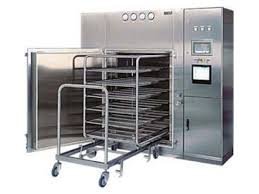SOP for Oven for Depyrogenetion

Standard Operating Procedure (SOP) for Operation of Hot Air Oven for Depyrogenation
1.0 Purpose
To describe the procedure for the correct operation of the depyrogenation oven to ensure effective removal of pyrogens and sterilization of glassware, vials, and other heat-resistant items.
2.0 Scope
This SOP applies to the operation of the Hot Air Depyrogenation Oven located in the Quality Control and Production areas of the facility.
3.0 Responsibility
-
Operator/Analyst: To operate the oven as per this SOP and record data.
-
QC/Production Head: To review and approve operation records.
-
Engineering/Maintenance: For calibration, validation, and preventive maintenance.
4.0 Definitions
-
Depyrogenation: Removal or destruction of pyrogenic substances (e.g., endotoxins) from glassware or equipment by dry heat, usually at temperatures above 250 °C.
-
Hot Air Oven: A controlled equipment that uses dry heat to sterilize and depyrogenate.
5.0 Procedure
5.1 Pre-Checks
-
Ensure the oven is clean and free from dust or residues.
-
Verify calibration and validation status (temperature mapping, alarms, and timers).
-
Check availability of temperature probes/data logger (if required).
-
Ensure glassware/vials to be depyrogenated are clean and dry.
5.2 Loading
-
Arrange items uniformly on trays, ensuring adequate air circulation.
-
Avoid overloading or direct contact of items with heating elements.
-
Place temperature probes inside load items (as per protocol) for validation.
5.3 Operation
-
Switch ON the oven.
-
Set the required temperature (250°C – 300°C) and time (minimum 30–60 minutes depending on load and protocol) as per SOP/validation.
-
Start the cycle. Allow the oven to reach the set temperature and stabilize.
-
Monitor cycle parameters through the digital display/recorder.
-
Ensure the full cycle is completed (heating, holding, and cooling phases).
5.4 Unloading
-
After cycle completion, allow the oven to cool to a safe temperature (< 80°C).
-
Open the door carefully to avoid thermal shock.
-
Remove depyrogenated items using sterile gloves and tongs (if required, in Grade A/B environment).
-
Transfer items immediately to a clean and controlled storage area.
6.0 Precautions
-
Do not open the oven door during the cycle.
-
Always use heat-resistant gloves when handling trays.
-
Do not overload, as it may cause uneven heat distribution.
-
Ensure validated cycle parameters (temperature, time, load configuration) are followed.
-
Use only clean and dry materials for depyrogenation.
7.0 Frequency of Use
-
As per production and QC requirements.
-
Requalification of oven to be done as per validation schedule (annually or as per SOP).
8.0 Documentation
-
Record batch number, load details, cycle start/stop times, set and actual temperature, and operator initials in the Depyrogenation Logbook.
-
Attach printouts/data logger reports with the batch record.
9.0 References
-
USP <797>, <1228>
-
EU GMP Annex 1
-
WHO Guidelines on Sterility Assurance
🎓 Discover one of the best Pharmaceutical Microbiology course available —click below to explore the course that’s shaping future Microbiology course skills.

